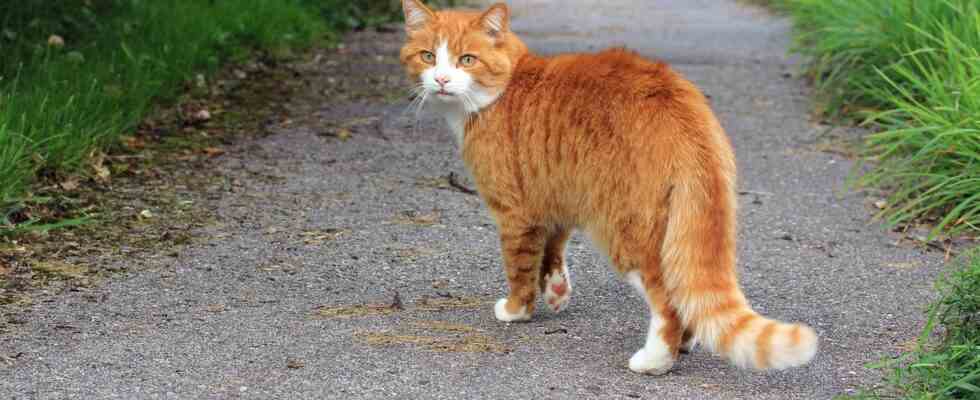day releaser
What cats experience on their forays into the neighborhood
On average, free-roaming cats move 12 to 15 kilometers a day (symbol photo)
© Astrid860 / Getty Images
Outdoor cats probably have the most beautiful life of all cats: they can observe, stalk, chase little mice or loll in the sun. But is this idea that we have of our beloved pets correct?
People who have an outdoor cat at home often ask themselves what the animal is up to on its forays through the neighborhood. Because this curiosity is so great, more and more people are trying to analyze behavior more closely.
Behavioral ecologist Maren Huck from the University of Derby, together with animal behaviorist Samantha Watson from Manchester Metropolitan University, published an article in Applied Animal Behavior Science in 2019 analyzing the behavior of 16 cats that had small cameras around their necks.
Behavior changes when people are around
The research duo found out that cats behave completely differently when their owners are in the garden and close to them. The cats are relaxed, taking a nap or grooming themselves. Most likely because they feel safe around humans. When a person leaves the garden, the behavior of the animal changes: it becomes more attentive and vigilant, and it observes its surroundings very closely. Meeting other cats does not always immediately mean stress: some animals even greet each other by nudging their noses together or sitting across from one another and observing one another. a short one YouTube video shows the recordings.
Vox show shows pictures and GPS data of free-roaming cats
The VOX program “When nobody is looking – The mysterious life of our cats” also deals with the question of what cats do when they feel unobserved by people. The experts Kate Kitchenham and Martin Wikelski use video recordings to analyze the behavior of the animals and use the images to describe when something is not species-appropriate or too stressful for an animal.
The analysis that shows where and how far free-roaming cats move is fascinating. GPS transmitters were hung around the necks of the animals. The satellite images and the movement data show that all cats have a fixed territory in the neighborhood. Nearby forests and fields are popular places for hunting. They have fixed routes that even lead over busy roads or train tracks. They also meet conspecifics, although there can sometimes be arguments. The horror and surprise of some cat owners is clearly visible. Some cannot even imagine how far their cat walks every day and misjudge the distance completely. In the second episode, for example, the cat Luna is shown, which runs 39.6 kilometers a day. A real marathon runner, because cats normally only run about 12 to 15 kilometers.
In general, it’s nice to see that our beloved furry friends know their way home and always find their way back to their favorite people.
The program “If no one is looking – The mysterious life of our cats” runs on Saturdays at 7.10 p.m. on the TV channel VOX – and as a stream on RTL +
Swell: Science.org / VOX



